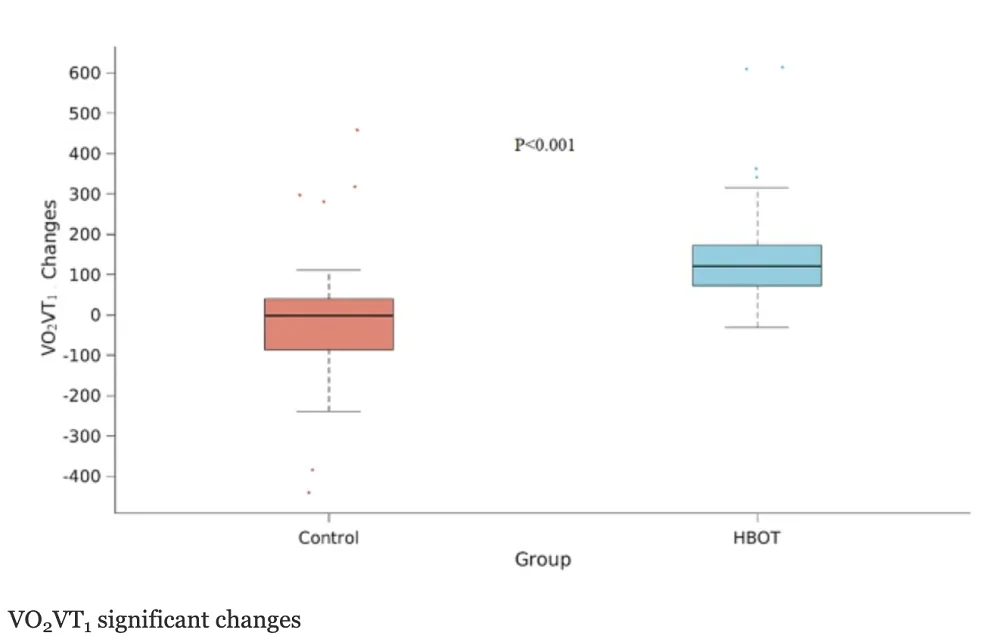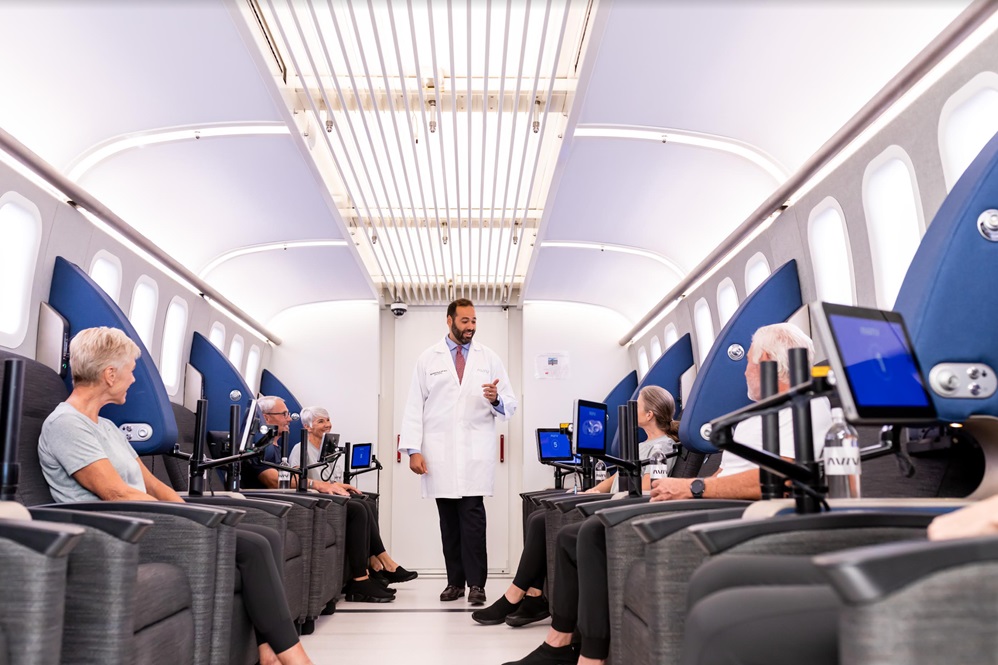In a new study, a 12-week protocol of hyperbaric oxygen therapy (HBOT) resulted in marked increases in aerobic capacity and cardiac blood flow [1].
Building pressure
HBOT involves placing patients in a tightly sealed chamber where they breathe pure oxygen under higher-than-normal atmospheric pressure. This treatment has been approved for a small number of conditions, such as gas gangrene and thermal burns.
HBOT can reduce swelling and boost oxygenation in damaged tissues, which is likely to improve mitochondrial metabolism and reduce inflammation. As such, it has been touted as a potential anti-aging intervention. However, not all claims made by HBOT clinics have been confirmed by science.
Dr. Shai Efrati is an HBOT pioneer hellbent on scientifically proving its worth. Previous research by his group has suggested, among other things, that HBOT can alleviate vascular dysfunction and amyloid burden in an Alzheimer’s disease mouse model and in elderly patients and can improve cognition after a stroke [2]. There have also been findings of improved bone health and other benefits.
In this new study, Efrati and his colleagues focused on a different, although not unrelated, aspect of health. To investigate the effects of HBOT on cardiorespiratory fitness in a randomized controlled trial, the researchers recruited 63 elderly patients with a median age of 70 – a respectable sample size.
The primary endpoint of the study was VO2Max, or maximal oxygen uptake. VO2Max is an important marker of cardiorespiratory fitness that has shown strong correlation with all-cause mortality [3]. One study goes as far as to suggest that VO2Max is “a key predictor of longevity” [4]. VO2Max levels markedly decline with age.
Breathe deeper
The participants received 60 sessions of HBOT over a period of 12 weeks. Each session included breathing 100% oxygen at two times normal atmospheric pressure, and lasted 90 minutes, with periodic five-minute breaks. During the trial, no changes in lifestyle, physical training, diet, and medications were allowed for either group.
The treatment resulted in a significant increase in VO2Max and even more significant – in VO2Max/kg, that is, maximal oxygen uptake normalized for body weight. The effect size was moderate but noticeable.
Yet an even more pronounced increase was detected in oxygen consumption measured at the first ventilatory threshold (VO2VT1). This important physiological marker is also called “the aerobic threshold”, because it represents the transition from predominantly aerobic energy production to a mix of aerobic and anaerobic energy production. Simply speaking, people with higher values start becoming out of breath later during exercise.

Let it flow
The researchers also measured cardiac perfusion: the amount of blood the heart receives. Both myocardial blood flow and myocardial blood volume (the total volume of blood within the myocardial tissue at a given moment) showed steep increases in the treatment group. Interestingly, no significant changes were observed in pulmonary function.
The importance of the study stems from the fact that, as the authors note, “while the impact of VO2Max on daily life is generally minimal for young individuals, elderly individuals heavily rely on their VO2Max to perform everyday tasks effectively.” Elevating VO2Max levels in the elderly can theoretically have a strong impact on mortality. People with conditions such as chronic fatigue could also benefit from this treatment. Finally, increased cardiac perfusion can boost brain health. On the downside, HBOT requires complex machinery and is costly, at least for now.
The study findings suggest that the newly used HBOT can enhance physical performance in aging adults. The key enhancements observed include improvements in maximal oxygen consumption, and the first ventilatory threshold. Moreover, the use of cardiac MRI demonstrated increased cardiac perfusion as a significant mechanism underlying the observed improvements induced by HBOT.
Literature
[1] Hadanny, A., Sasson, E., Copel, L., Daniel-Kotovsky, M., Yaakobi, E., Lang, E., … & Efrati, S. (2024). Physical enhancement of older adults using hyperbaric oxygen: a randomized controlled trial. BMC geriatrics, 24(1), 572.
[2] Shapira, R., Gdalyahu, A., Gottfried, I., Sasson, E., Hadanny, A., Efrati, S., … & Ashery, U. (2021). Hyperbaric oxygen therapy alleviates vascular dysfunction and amyloid burden in an Alzheimer’s disease mouse model and in elderly patients. Aging (Albany NY), 13(17), 20935.
[3] Mandsager, K., Harb, S., Cremer, P., Phelan, D., Nissen, S. E., & Jaber, W. (2018). Association of cardiorespiratory fitness with long-term mortality among adults undergoing exercise treadmill testing. JAMA network open, 1(6), e183605-e183605.
[4] Strasser, B., & Burtscher, M. (2018). Survival of the fittest: VO2max, a key predictor of longevity. Front Biosci (Landmark Ed), 23(8), 1505-1516.








